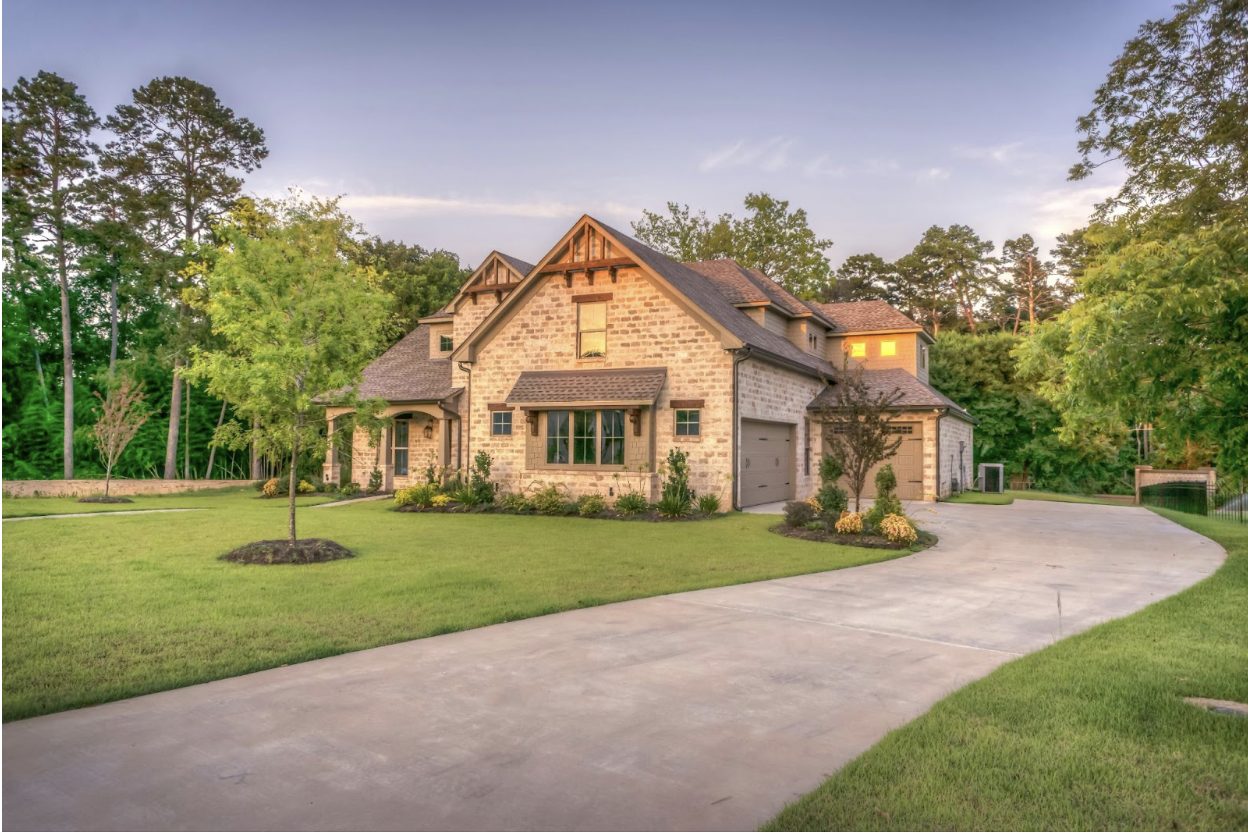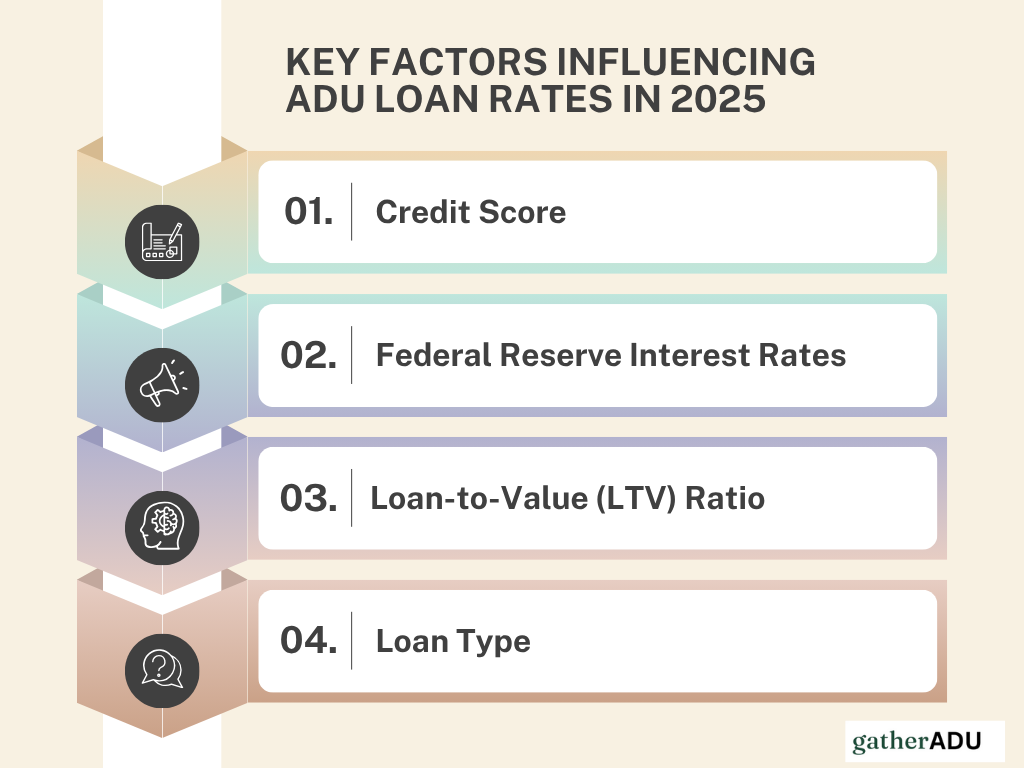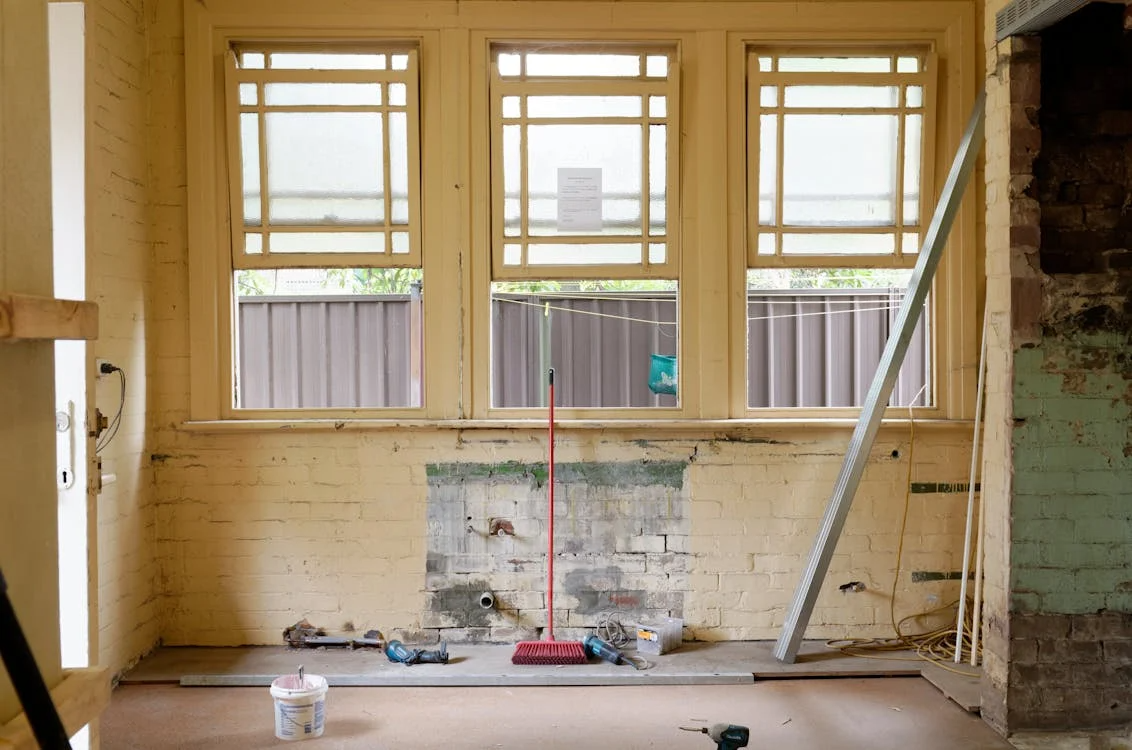ADU Knowledge
August 3, 2025
ADU Loan Rates in California: What LA Homeowners Need to Know in 2025

.png)
Schedule a free appointment with one of our ADU experts.
Get ADU QuoteOr call: (323) 591-3717
ADU loan rates in Los Angeles are higher than standard mortgage rates in 2025, typically falling between 6.75% and 8.25%. This is due to elevated construction costs and tighter lending conditions. Homeowners must navigate stricter credit, income, and project planning requirements to qualify. Choosing the right financing option, such as a construction loan, HELOC, or cash-out refinance, is essential to keep your ADU project financially manageable. With careful planning, you can secure favorable terms and turn unused space into valuable property.
In 2025, however, financing an ADU requires more planning than ever. Construction costs remain high, interest rates are fluctuating, and lenders are applying stricter approval criteria. Understanding your loan options and how to secure the best rate is essential to making your project financially viable. In this blog, we’ll break down the current ADU loan rates in California, explore the most popular financing options for LA homeowners, and share practical tips to help you borrow smarter and build with confidence. If you’re still deciding between renovation or starting fresh, this guide from Gather ADU can help you compare both approaches and choose what’s right for your property.
In 2025, ADU loan rates in California typically range between 6.75% and 8.25%, depending on the type of loan, your credit profile, and the lender’s risk assessment. While slightly higher than traditional mortgage rates, these rates remain competitive given the rising demand for housing and inflation-driven lending conditions.
Several variables affect the interest rate you’ll be offered:

Financing an Accessory Dwelling Unit (ADU) in Los Angeles requires careful planning, especially in 2025’s fluctuating interest rate environment. Fortunately, several loan options can help homeowners turn their backyard or garage into a legal rental unit or guest house. Below are the most popular and practical ADU financing options for LA homeowners, along with key benefits and drawbacks:
A HELOC is a revolving line of credit secured by your home’s equity. It’s ideal for phased ADU construction since you can draw funds as needed and only pay interest on what you use. However, most HELOCs have variable interest rates, which may rise over time, and lenders often require strong credit scores.
This option lets you refinance your existing mortgage and take out the difference in cash to fund your ADU. It’s a good solution if you have built substantial equity and want a fixed interest rate. However, you’ll be resetting your mortgage terms, and current rates in 2025 may be higher than your original loan.
Construction loans are designed for ground-up ADU builds or major conversions. Funds are disbursed in phases based on project milestones. These loans require detailed contractor estimates and strong borrower profiles but can cover both labor and material costs comprehensively.
This federally backed loan is helpful for buyers or current homeowners who want to purchase and improve a home with an ADU in mind. It combines home purchase and renovation costs into one loan with a low down payment. It’s limited to owner-occupied properties and has borrowing caps.
Offered by the California Housing Finance Agency, this grant provides up to $40,000 to cover pre-construction “soft costs” like permits, design, and fees. It doesn’t need to be repaid, but homeowners must meet income and property requirements. In 2025, funding remains limited and competitive.
Tip: Choosing the proper financing method depends on your equity, credit score, timeline, and whether you’re building from scratch or converting space. Working with an ADU-experienced lender can save time and avoid surprises.

The amount you can borrow for building an ADU in Los Angeles largely depends on your home’s equity, credit score, and the type of financing you choose. Most lenders in California offer to finance 75% to 90% of the total project cost, assuming you meet the loan criteria. For example, if your ADU build is estimated at $200,000, you could potentially borrow between $150,000 and $180,000, depending on your financial profile. Homeowners with strong credit and significant equity in their property typically qualify for higher borrowing limits and better interest rates.
In terms of overall project costs, building an ADU in Los Angeles generally falls between $150,000 and $350,000. This range depends on factors like size (studio vs. two-bedroom), design complexity, permit fees, and whether it’s attached, detached, or a garage conversion. Financing options such as HELOCs, cash-out refinances, and construction loans vary in borrowing power. HELOCs, for instance, can offer up to 85% of your available equity.
In comparison, construction loans may cover up to 90% of the ADU’s projected value if supported by a detailed construction plan and budget. FHA 203(k) loans, though more restrictive, allow up to 110% of the home’s future value but are limited to primary residences. Pairing a traditional loan with state grants, like the CalHFA ADU Grant, can also reduce the amount you need to borrow, making your ADU project more financially feasible.
Waiting to build your ADU could cost you more in the long run. In 2025, both construction costs and loan interest rates will remain on an upward trend. Material prices have stabilized, but labor shortages in Los Angeles continue to drive contractor rates higher. Delaying your build by even 6–12 months could mean paying 10–15% more for the same project.
Construction inflation in LA has averaged 6–8% annually over the past few years. At the same time, financing rates remain elevated, and while there’s hope for future rate drops, the Federal Reserve has given no firm indication of significant cuts in the short term.
Los Angeles continues to face a severe housing shortage, with high demand for affordable rental units in every central neighborhood. ADUs built in 2025 are likely to command $1,500–$3,000 per month in rent, depending on size and location. Every month you wait is potential income lost.
With home values still strong in LA, most homeowners are sitting on substantial untapped equity. Using that equity now to build an income-producing ADU allows you to reinvest in your property while boosting long-term value.

Navigating ADU financing in California can feel overwhelming. Between rising construction costs, complex zoning laws, and shifting loan requirements, LA homeowners often face delays before the building even begins. Without expert support, your backyard unit could stall before breaking ground.
That’s where Gather ADU comes in. Their all-in-one team specializes in California ADUs, offering design, financing, permitting, and lender matching under one roof. With deep expertise in LA’s housing market and ADU laws, they help you avoid costly missteps and move your project forward with confidence.
Start your ADU project today with Gather ADU, innovative solutions, faster approvals, and local experts on your side.
Yes, ADU loan rates are usually slightly higher. While standard mortgage rates in California for 2025 average between 6.50% and 7.00%, ADU financing like construction loans or HELOCs often ranges from 6.75% to 8.25%. Lenders see ADU projects as higher-risk, but strong credit and home equity can help you get better terms.
Yes, some California lenders allow projected rental income from your ADU to count toward your debt-to-income (DTI) ratio. This can improve your borrowing power, especially for long-term rental units. Be prepared to submit a rental market analysis or a signed lease if required.
Most lenders look for a credit score of 660 or higher. Better terms are usually available if your score is 700+, especially for HELOCs or cash-out refinancing. FHA 203(k) loans may accept scores as low as 620, but they come with extra rules and mortgage insurance.
Approval timelines vary. On average, expect 30 to 60 days. HELOCs and cash-out loans move quicker, while construction or FHA loans take longer due to more paperwork. Having permits, plans, and contractor bids ready helps speed things up.
Yes, programs like the CalHFA ADU Grant offer up to $40,000 to cover pre-construction costs, such as permits, plans, and site assessments. It’s a non-repayable grant, but eligibility is based on income and property type. Using it can cut down the loan amount you need.
.png)
Not sure where to start with your ADU project?